 |
 |
|
|
HISTORICAL BACKGROUND The River Lea is often referred to as London’s second river and rivals only old father Thames in terms of its length and the way it meanders through several counties and many of the boroughs of North and East London. The source of the river is at Leagrave Marsh near Luton in Bedfordshire and it then flows through the quiet landscapes of Hertfordshire, Essex and the former county of Middlesex before reaching the urban sprawl of London and its final outfall into the River Thames at Limehouse. The River Lea was one of the earliest river navigations and was thriving long before the age of the canals The history of any waterway river is unique but the River Lea has facets that make it outstanding. The evidence of man using its waters go back into prehistory and remains of a Bronze Age canoe was once found near Walthamstow marshes and furthermore the recovery by archaeologist of artifacts along its route have helped recreate the lifestyles of many inhabitants stretching back thousands of years. The waters were used to transport food and goods plus building stone to help construct mills to generate power for grinding grain. There are records that show the presence of mills in Tottenham dating back to medieval times and also an early brickmaking industry. The marshes and fields alongside the River Lea also provided rich pastureland and agriculture played a very important part in the development of Tottenham. The marshes were used to grow hay which was in great demand to feed the many horses in London. The river could then be used to transport the crop to London. The original route of the River Lea contained many shallows and pools and meanders that made navigation difficult. Eventually, in the late 18th century a series of cuts and canals were constructed to bypass the less navigable sections of the river. And thus the River Lea navigation and the series of Locks and weirs that exist today were first developed. |
DIAGRAM SKETCH SHOWING THE ROUTE OF THE RIVER LEA FROM SOURCE  This wonderful sketch by Peter Brown shows the route and places of interest from its source at Leagrave near Luton to where it enters the River Thames near Bow Creek in London. (As Peter has noted this map is not to scale.) |

|
LITERARY
REFERENCES: |
||
 THE SWAN - TOTTENHAM HIGH CROSS 1822 THE SWAN – GARDENS AND ARBOUR (Right) As referred to by Isaak Walton in his classic book ‘THE COMPLEAT ANGLER’ (1653) PORTRAIT ISAAK WALTON c 1643 |
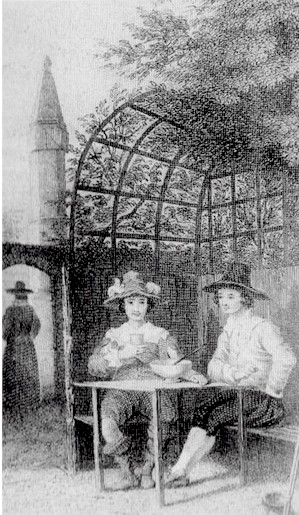  |
||
Fred Fisk also refers to the
book ‘Rambles by Rivers’ by James Thorne in 1844 in which it reads: “It was a beautiful
walk along its banks, with forget-me-nots growing by the water’s edge. The numerous
boats and barges gave it a very animated appearance”. |
|||
 |
TOTTENHAM
MILLS FERRY LANE TOTTEHAM By: John Bonny Original housed at Bruce Castle Museum Tottenham |
||
Of Tottenham Marshes she
writes: |
|||
 |
|||
THE JOHN BONNY GALLERY |
|
 |
 |
 |
 |
| AGRICULTURE AND MARKET GARDENS As previously mentioned, the Tottenham Marshes had been used to grow Hay which supplied both food and fodder for the horses in London. There were also a number of farms who grew arable crops and raised some livestock on the alluvial soil that bordered the River Lea. One of the last surviving farms was ‘Asplin’s Farm’ located near Marsh lane that was the subject of a wonderful painting by the artist John Bonny (SEE ABOVE) which is now part of the collection housed at Bruce Castle Museum. Tottenham was also home to many farms and market gardens producing vegetables, salad crops and garden plants for the population in London. The rich soil along the banks of the River Lea was ideally suited for this purpose. INDUSTRY |
HARRIS LEBUS FACTORY -1912 RIVER LEA AND TOTTENHAM LOCK IN THE FOREGROUND |
| There was the large engineering company of Keith Blackman’s, who
operated from Ferry Lane, and in South Tottenham the large timber company Bambergers who
imported large quantities of timber from overseas and made extensive use of the river to
transport their materials. The paper mills of John Dickinson, once situated near Tottenham
Hale, would also have had relatively close access to the transport links afforded by the
River Lea There were also many small wharves operating close to Tottenham Lock and Ferry lane in Tottenham making the river accessible to local industry. On nearby Walthamstow Marsh, Alliot Verdan Roe (A.V. Roe) became the first man to fly an all British built aircraft in July 1909. He was one of the early pioneers of British Aviation and formed his own aircraft construction company. The Avro 504 plane became the most prolific British aeroplane ever built during the First World War, with more than 20,000 built. NEW INFORMATION The River Lea, close to Tottenham marshes, was also used by Thomas William Moy, a pioneer of Aeronautics and Marine Engineering who lived in Church Road Tottenham in the latter part of the 19th century. He conducted experiments and trials using models on the Rive Lea, to study the dynamics of water upon his models and how it flowed over different wing designs. Thomas William Moy achieved the first flight of an unmanned aircraft at Crystal Palace in 1875. This was 25 years before the Wright Brothers in the USA. |
RIVER LEA PICTURE GALLERY |
|
 |
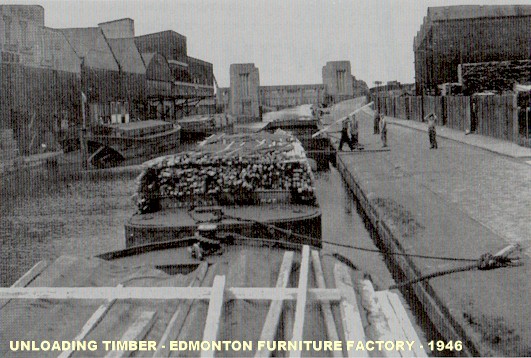 |
 |
 |
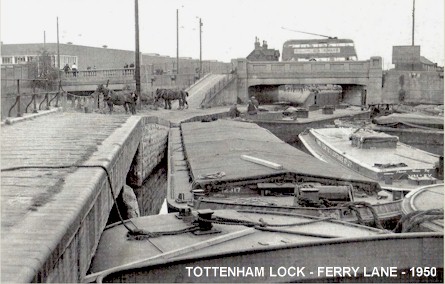 |
 |
 |
 |
 |
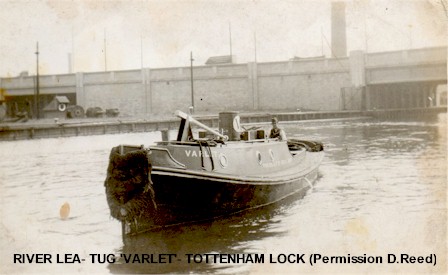 |
|
ADDITIONAL PICTURES OF THE RIVER LEA AT
TOTTENHAM - APRIL 2023 |
|
 |
 |
 |
 RIVER LEA - TOTTENHAM LOCK |
| MARKFIELD PARK & BEAM ENGINE With growing populations during the late 18th and 19th centuries, sanitation was becoming more of a problem. Unfortunately many people simply used local rivers and streams to dispose of their waste. One of the local streams in Tottenham was of course the Moselle that rose in Muswell Hill and then passed though Hornsey, Wood Green and Tottenham before discharging into the River Lea near Markfield Park. When these streams flooded they deposited their water and debris across both Tottenham marshes and local roads bordering the route of the Moselle. Clearly this was a severe health hazard and the source of many diseases. To combat this problem Tottenham became one of the first areas of the then County of Middlesex to take powers under the 1848 Public Health Act to set up a public water supply and associated sewage disposal system. The sewage works were established at Markfield Park which included the construction of filter beds, settlement tanks and the main pumping house which contained a remarkable Beam Pumping Engine that was driven by steam power. Although the sewage works ceased operation back in 1964, the Beam Engine is still in working order thanks to a splendid team of volunteers. In its time this was a masterpiece of Victorian engineering and for a number of days each year it is brought up to full steam at the Markfield Beam Engine Museum located in Markfield Park. |
|
ABOVE: MARKFIELD PUMPING STATION RIGHT: MARKFIELD BEAM ENGINE |
|
| INFECTIOUS DISEASES: Following the outbreak of both Cholera and Smallpox and the epidemics in London, Tottenham was chosen by the Metropolitan Asylums Board to construct one of the first 'Fever and Infectious Diseases' Hospitals in 1892. On the 1894 map of Tottenham you see the Fever Hospital in 'St Ann's Road but there was also a Smallpox Hospital showing in Markfield Park. As you most probably know the Hospital was originally known as the 'North Eastern Fever Hospital' before being renamed 'St Ann's Hospital' in 1948. |
|
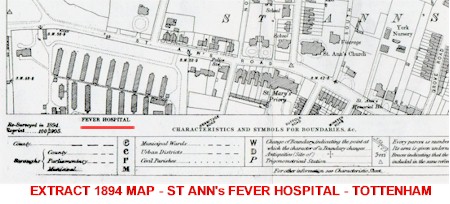 |
 |
| However, It is interesting to note the
background to a Smallpox hospital being constructed alongside the River Lea in Tottenham.
According to the report by the ‘Vauxhall Society’ the authorities in London had
decided as follows: " It recommended that cases in future should be transported by River to Hospitals situated on the banks of the Thames and that only those too ill to be moved should be treated in the Metropolis' It would appear that the authorities had also built Ambulance steamers and a series of floating and riverside hospitals were established so the patients could be sent down river for treatment. So perhaps this would explain the location of the 'Smallpox Hospital’ in Markfield Park. As you can see from the 1894 map it is very close to the banks of the River Lea with its ready access to London and the Thames |
|
| SPORT & LEISURE The marshes at Tottenham have long been a place for sporting and leisure activities. For many years both fishing and wildfowl shooting were common activities on the River Lea. Many children from Tottenham no doubt first learnt the art of fishing along the banks of the River Lea. As a child growing up in the 1950’s we would spend many happy hours and indeed days fishing along the stretch between Tottenham and Stonebridge Locks. There was always a frantic rush to retrieve all of your tackle moments before a huge barge horse trundled along the towpath with a large load of timber destined for the many furniture factories that once stood further upstream. |
|||
 |
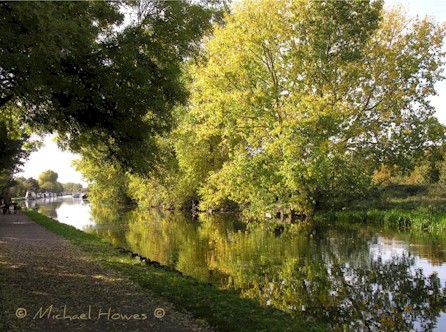 |
||
| Few people will realise that the origins of our
very own Tottenham Hotspur Football team began on Tottenham marshes when the then Hotspur
Cricket Club decided they needed a sport to keep them occupied over the winter months. So
back in 1882 the Football Club was founded and their early matches were played on
Tottenham Marshes. It was not until 1888 that Spurs moved to a larger ground in
Northumberland Park where the first admission charge of 3d was made. The Club moved to its
present site in 1899 on the site of a former Market Garden in High Road Tottenham. The River Lea was also popular for swimming when bathers would use the river itself. However in 1905 the first open-air swimming pool was constructed on Tottenham marshes drawing its water straight from the River Lea. The swimming pool was demolished in 1938 following the opening of the Tottenham Lido in Lordship Lane. It was also possible to cycle along the banks of the River Lea using the old towpaths used by the barge horses to draw their loads along the river. Once again from my personal memories in the 1950’s we would think nothing of cycling from Tottenham Lock as far as Broxbourne and Ware which were many miles further upstream. The marshes and river banks are also a haven for wildlife and in past times was regularly used by inhabitants of Tottenham for picnics or just playing in the meadows among the hay. |
|||
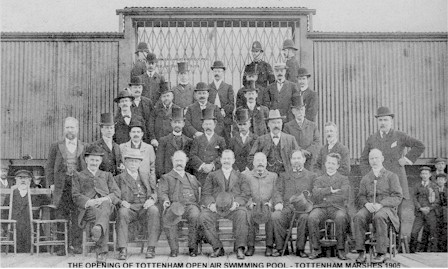 |
 |
 |
|
| The river was also used for pleasure boats and from the late 19th century a number of boatyards were opened along its banks. We have a wonderful story that recalls the founding of the ‘Lea Valley Sailing Club’ in the late 1950s. Who would have thought of sailing craft being used in Tottenham ? CLICK HERE to link to Ray Warren's Story | |||
 |
 |
||
| Today of course there are a plethora of sporting venues throughout the Lea Valley and the activities Centre at Pickett’s Lock in Edmonton hosts facilities for watersports, bowls and athletics. The new Olympic Park at Stratford was constructed on waste industrial land adjoining the River Lea as it flows down towards the Isle of Dogs. This was the venue of the very successful 2012 London Olympics. | |||
Background View: Postcard - Multiviews of the
River Lea - Tottenham c 1900 |
Alan Swain
January 2013
Article Updated to include Diagram,
Photographs and information about Thomas W Moy - April 2023
Sources:
A guide to the Lea & Stort Navigations -1994
The History of Tottenham – Fred Fisk 1913
Reminiscences of Tottenham – Mrs. E.M Couchman 1909